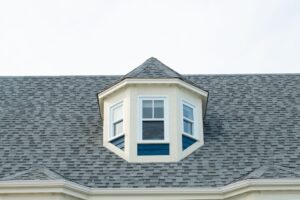Dormer windows are a fantastic architectural feature that can add charm, character, and functionality to any home. They extend out from the roof’s slope, providing additional space, natural light, and ventilation to the upper levels of a building.
This comprehensive guide explores the various styles of dormer windows, their unique characteristics, and their benefits – helping you make more informed decisions for your home’s design.
What are Dormer Windows?
As mentioned above, dormer windows are vertical windows that project from a sloping roof. They are typically installed in attics or lofts to create usable space, increase headroom, and introduce more light and ventilation. Dormer windows come in various styles, each offering distinct architectural appeal and functionality.
Common Styles of Dormer Windows & Roofs
Gable Dormer

Gable dormers are characterized by a peaked roof that forms a triangular shape above the window. They are among the most common and versatile dormer styles.
One benefit is that they add significant headroom and floor space, making them ideal for creating additional living areas. They also enhance the exterior aesthetics with their classic, symmetrical design. Classic window styles such as the double hung work perfectly with these types of dormers.
Shed Dormer
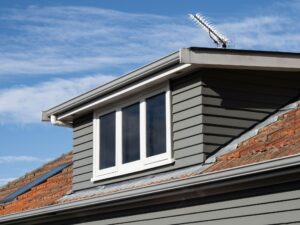
Shed dormers feature a single-sloping roof that extends from the main roof, creating a flat, rectangular shape. These types of dormers offer maximum interior space and light due to their expansive design. They are excellent for large rooms, such as bedrooms or offices.
Unlike gable dormers, shed dormers are commonly found in Craftsman, bungalow, and modern homes. They can be a great alternative to a skylight and, if paired with a good set of casement windows, can also provide any room with natural air and ventilation.
Hipped Dormer
Hipped dormers have a roof that slopes on all three sides, forming a pyramid-like shape above the window. Compared to gable dormers, hipped dormers provide a softer, more integrated look and gives stronger ventilation throughout your space. French, Mediterranean, and ranch-style homes are best suited for hipped dormers.
Similar to gabled dormers, classic window styles such as the double hung work perfectly.
Eyebrow Dormer
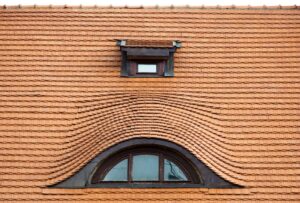
Eyebrow dormers have a low, curved roof that resembles the shape of an eyebrow. They are typically smaller and more decorative. Some say they add a unique, whimsical charm to a home. Eyebrow dormers are primarily used for aesthetic purposes and provide moderate light and ventilation.
The best homes for eyebrow dormers are Tudor, cottage, and historic homes. A customized specialty window in a hemispheric shape is typically used for these types of dormers. They are commonly used to accentuate the entry or patio doors of a home, serving mainly as a roofed transom window.
Flat Roof Dormer
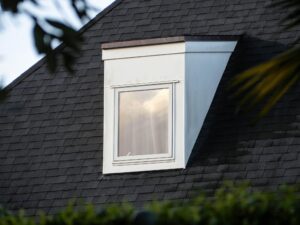
Flat roof dormers, as the name suggests, have a flat roof. They are simple in design and are often used in modern architecture. Due to their minimalist design, flat roof dormers maximize interior space and offer a contemporary look. Additionally, they are easy to construct and maintain compared to other types of dormers.
Flat roof dormers are best suited for modern and contemporary homes. Above all, casement windows pair best with these dormers.
Wall Dormer
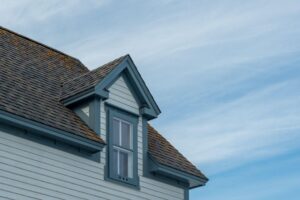
Wall dormers extend vertically from the wall of the house rather than the roof slope, and are easily integrated into the building’s façade. The main benefit of wall dormers is that they provide additional vertical space. Another benefit is that they dramatically change the exterior appearance of a home and are often used to create grand, expansive views.
Georgian, federal, and other classical architectural styles are best suited for wall dormers. Plus, you can pair them with double-hung windows for a timeless and classic look for your bedroom or upstairs study area.
Bonnet Dormer
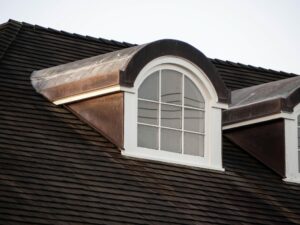
Bonnet dormers, also known as arched or segmental dormers, have a rounded roof that forms a gentle arch over the window. These add elegance and a soft, curved element to the roofline, and also provide a moderate amount of light and space.
Bonnet dormers are perfect for French, Dutch, and Italian architectural styles.
How to Choose the Right Dormer Style For Your Home
When selecting a dormer style, consider the following factors:
Architectural Style: Choose a dormer that complements the overall design of your home. For example, gable dormers suit traditional homes, while flat roof dormers are ideal for modern designs.
Functionality: Determine the purpose of the dormer. If you need additional living space, shed or gable dormers are good options. For decorative purposes, consider eyebrow or bonnet dormers.
Space & Light: Assess how much interior space and natural light you need. Larger dormers like shed and gable dormers provide more room and light compared to smaller, decorative dormers.
Roof Structure: Ensure that your roof can support the chosen dormer style. Some dormers require more structural modifications than others.
Select the Best Windows to Match Your Dormer Roofs
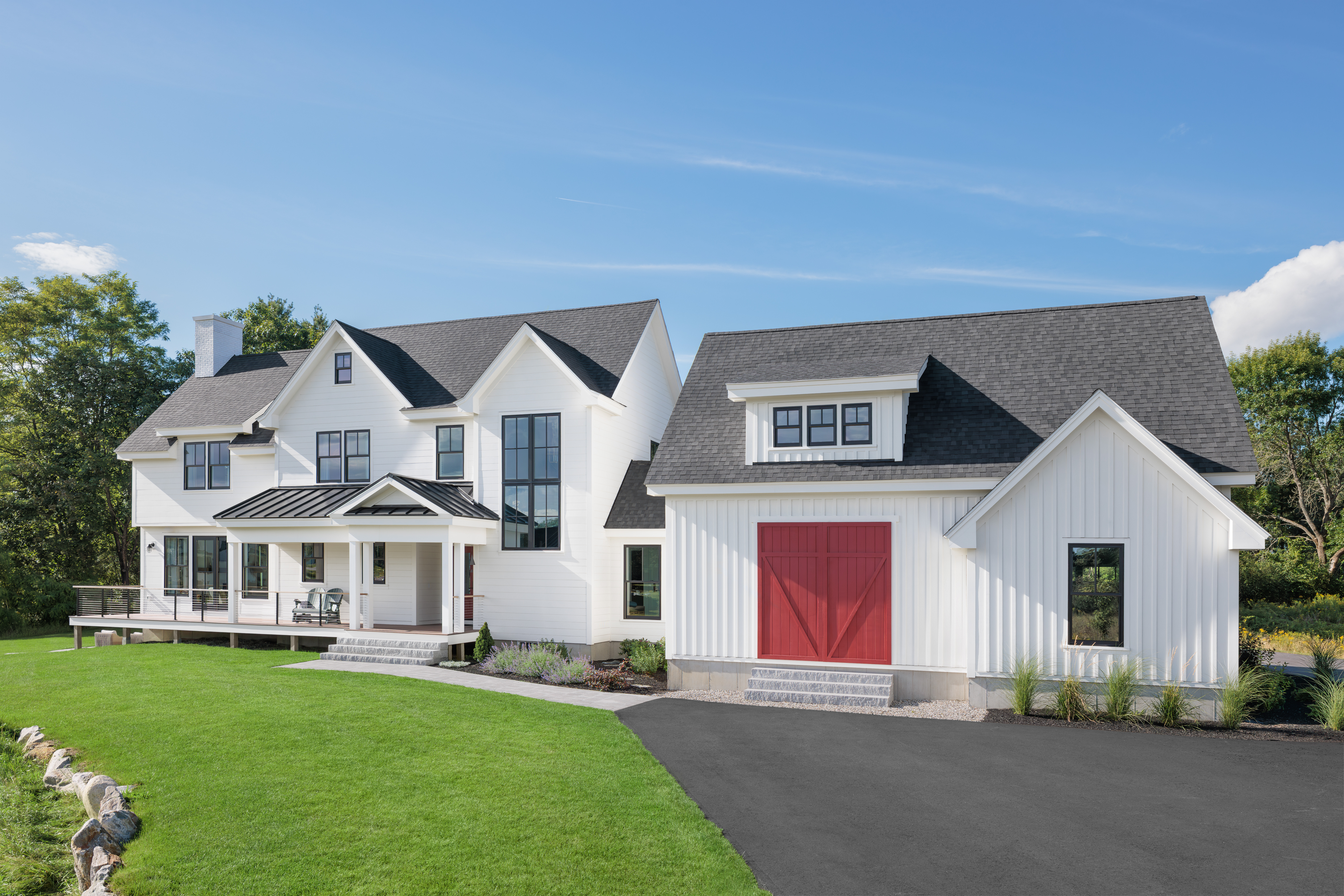
Dormer windows are a versatile and attractive addition to any home, offering both aesthetic and functional benefits. By understanding the different styles of dormer windows, you can choose the perfect one to enhance your home’s architecture and to help meet your specific needs. Whether you’re looking to create more space, improve natural light, or add a unique design element, dormer windows offer endless possibilities for transforming your home’s interior and exterior.
Trust the experts at Renewal by Andersen to enhance the look and feel of your home! With over 120 years in crafting high-quality windows, we offer the perfect solutions to transform your space with long-lasting beauty for years to come.
Give us a call or schedule your free consultation today!
